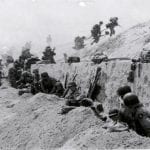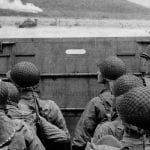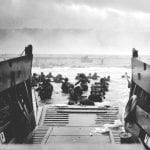D Day: The Beginning of the End of World War II
On June 6, 1944, the world witnessed one of the most significant military operations in history – D-Day. Also known as the Normandy landings, It was an invasion of Nazi-occupied France by Allied forces during World War II. The operation involved more than 156,000 soldiers, sailors, and airmen from the United States, Great Britain, and Canada. The goal of the invasion was to establish a foothold in Normandy and push the German army out of France.

The planning for the landing began in 1943, with General Dwight D. Eisenhower appointed as the Supreme Commander of the Allied Forces in Europe. The operation was originally scheduled for May 1944, but due to weather conditions, it was delayed until June. The Allies planned to land on five beaches in Normandy, codenamed Utah, Omaha, Gold, Juno, and Sword.
The invasion was a massive undertaking, involving thousands of ships and aircraft, and required detailed planning and coordination. The Allies used a variety of tactics to deceive the Germans, including a massive aerial bombing campaign in the weeks leading up to the invasion, and the use of dummy equipment to create the impression of a fake army.
Despite these efforts, the Germans were not completely caught off guard. They had fortified the beaches with barbed wire, mines, and other obstacles, and stationed troops and artillery along the coast. The Allied soldiers faced heavy resistance as they landed on the beaches, and many lost their lives in the early hours of the invasion. However, despite the difficulties, the Allies eventually succeeded in establishing a foothold in Normandy. Over the next several weeks, they pushed the Germans back and began to liberate France. The success of D-Day was a turning point in World War II, marking the beginning of the end of Nazi Germany’s dominance in Europe.
The legacy of D-Day is significant. The invasion paved the way for the liberation of Europe and ultimately the defeat of Nazi Germany. It also demonstrated the power of Allied cooperation and marked the beginning of the end of the war. D-Day also had a lasting impact on the countries involved. For France, the invasion marked the end of German occupation and the beginning of a new era of freedom. In the United States, D-Day is remembered as a defining moment in the country’s history and a tribute to the bravery and sacrifice of the soldiers who fought in the war. In Great Britain, D-Day is celebrated as a victory for the country and a reminder of the country’s resilience and determination in the face of adversity.
Today, D-Day remains an important symbol of sacrifice, heroism, and Allied cooperation. The beaches of Normandy are a popular destination for tourists and a pilgrimage site for those who wish to pay their respects to the soldiers who fought and died on that day. In conclusion, D-Day was a massive undertaking that marked a turning point in World War II. It demonstrated the power of Allied cooperation and marked the beginning of the end of Nazi Germany’s dominance in Europe. The legacy of D-Day is significant, and it remains an important symbol of sacrifice, heroism, and Allied cooperation to this day.
Sources:
- https://www.history.com/topics/world-war-ii/d-day
- https://www.army.mil/d-day/history.html
- https://www.historyonthenet.com/category/world-war-two/d-day
Cite This Article
"D Day: The Beginning of the End of World War II" History on the Net© 2000-2024, Salem Media.
July 27, 2024 <https://www.historyonthenet.com/d-day-the-beginning-of-the-end-of-world-war-ii>
More Citation Information.









